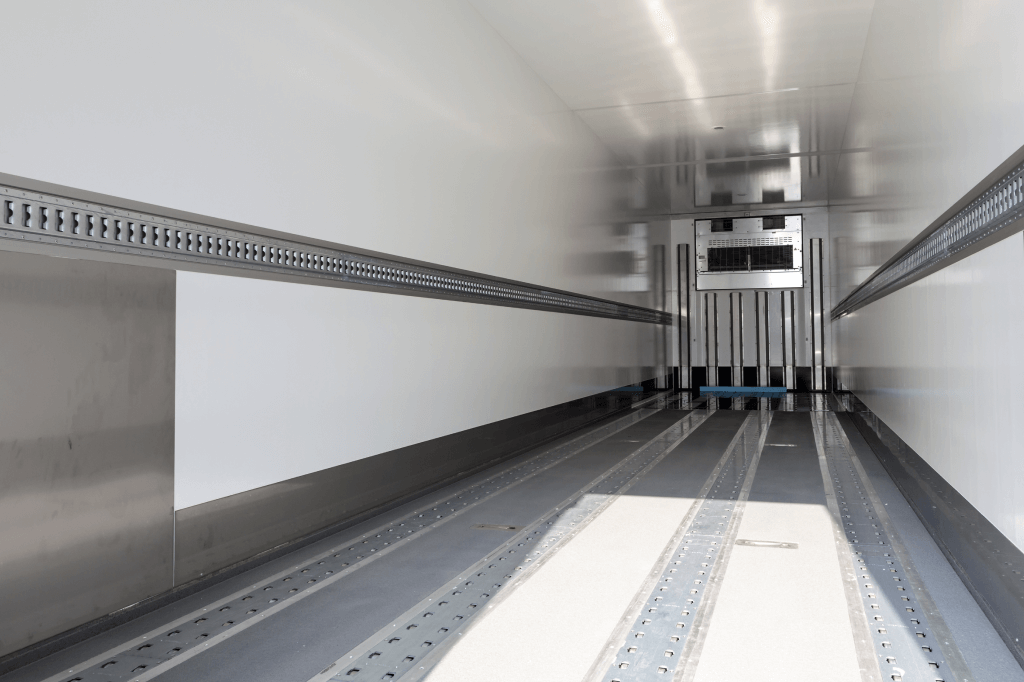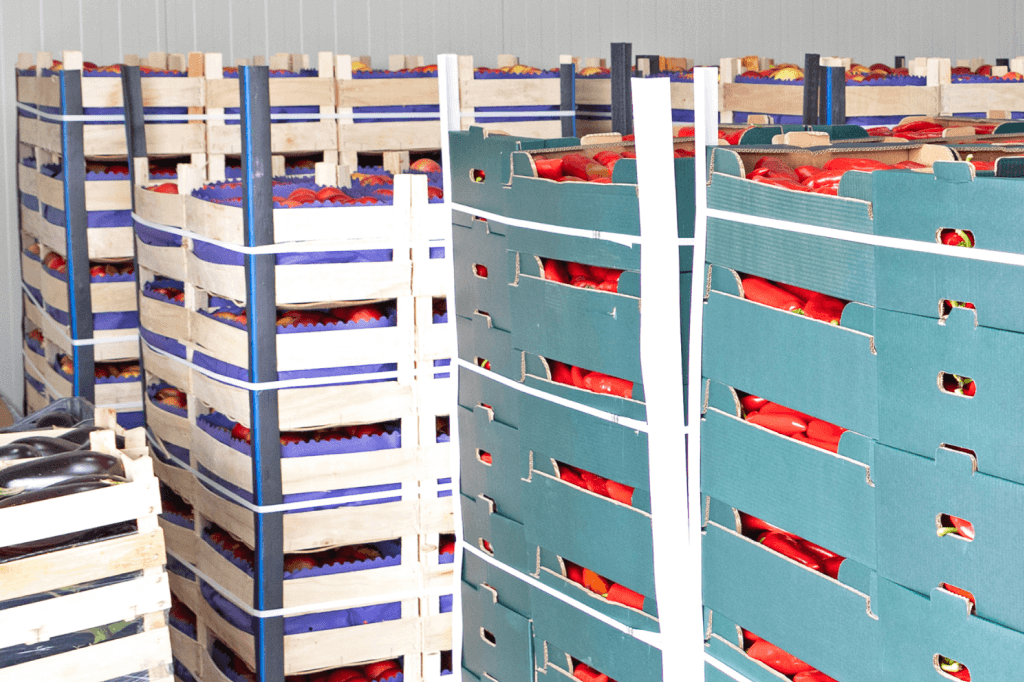A Shipper’s Guide to Temperature Controlled Shipping

The refrigerated goods transportation market is one of the fastest-growing areas in shipping. The global market for refrigerated shipping goods is expected to grow from 2021’s $56 billion to $62.4 billion in 2022, with demand increasing by as much as 11.5%.
While flatbeds tend to have the highest load-to-truck ratios, refrigerated trucks generally have steady high load-to-truck ratios. For example, in February 2022, the national reefer load-to-truck ratio was 13.74, meaning there were 13.74 loads posted for every truck advertised as available.
With tight limits on capacity, shippers need to understand how temperature-controlled shipping works, the limitations and regulations, and the best way to find reliable carriers while setting the best shipping rates.
What is temperature-controlled shipping?
Temperature-controlled shipping includes transporting goods that require keeping them at certain temperatures from pick up to delivery. Carriers accepting temperature-controlled loads are responsible for maintaining the proper temperature and environment for the goods for each load.
To do so, carriers used refrigerated trucks (called reefers) for most shipments to protect from heat and cold. Trailers hauling temperature-controlled loads have built-in refrigeration systems to maintain the necessary temperatures. Carriers may also use temperature-controlling shipping boxes or temperature-controlled containers for sensitive freight.
Reefers and temperature-controlled shipping containers can protect goods from heat during the hot summer months and cold winter months.
Why is temperature-controlled shipping needed, and what are the benefits?
Many goods and products require temperature control. Examples would include:
- Fresh produce. Produce can over-ripen or wilt without refrigeration. Also, when fruit ripens, it can generate heat which could cause it to spoil more quickly.
- Animal products. Meat, eggs, or dairy require specific temperatures to remain in optimal condition.
- Flowers and live plants. Vegetation may require temperature control and humidity control to avoid wilting or rotting during transportation.
- Medication. Many pharmaceutical products require refrigeration to maintain potency.
Other products may also need temperature control, such as candles that can melt if it gets too hot or ink, paint, glue, or cleaning products that freeze during winter with extreme temperatures.
In some cases, temperature variations of even a few degrees can harm goods, such as medication that may no longer work as intended or food that spoils easily in less-than-ideal conditions.
Limitations of temperature-controlled shipping
When shipping goods sensitive to temperature variations, there are a few limitations the shippers should be aware of. Reefer containers are likely to have less capacity since space is dedicated to refrigeration equipment and additional insulation. This can reduce the space available for cargo inside the trailer.
In today’s environment, with a shortage of drivers and continuing supply chain problems affecting the accessibility of truck parts, fewer refrigerated trucks are available to handle increasing demand. This can impact capacity and, in turn, the rates carriers will negotiate and the cost for shippers.
Regulations of temperature-controlled shipping
Rules and regulations for certain products also come into play, especially for goods that will be consumed or used in medicine. For example, pharmaceuticals, specimens, medical tests, and other biological materials fall under FDA and DEA regulations. Depending on the type of food or animal products being transported, adhering to FDA rules is a must.
The FDA has a long list of guidance documents and regulatory information for the transportation of products.

Types of temperature-controlled shipping
Managing refrigerated logistics, also called cold-chain logistics, requires multiple types of temperature-controlled shipping.
Trailers and warehouses
Refrigerated shipping and warehousing is typically the preferred option for goods that need precise temperature control. With the right equipment, temperatures can be maintained and monitored to ensure consistency throughout the transportation and storage process.
Dry ice
With some limitations, you can use dry ice to keep items cool or frozen during transportation. Items need to be tightly sealed to avoid degradation of the solidified carbon dioxide. Temperatures can vary during transport, and there may also be some restrictions on carrier usage. Keep in mind that dry ice is regulated as a hazardous material if shipping by air or water. However, it is not regulated by the Department of Transportation for transport by truck.
Styrofoam coolers
Styrofoam coolers are still used today, mainly in conjunction with dry ice. Styrofoam acts as an inexpensive and reusable insulator to keep goods cool for small shipments.
Refrigerant gel packs
Instead of dry ice, some shippers use refrigerant gel packs. Gel packs are recyclable, biodegradable, and reusable (frozen, melted, and refrozen again).
Carriers may also employ specimen kits, drums, heaters, and additional insulation to keep goods at the proper temperature.
Industries that require temperature-controlled shipping
Several industries need to control the temperature of goods during shipping. including:
- Food industry. Fresh produce, meat, dairy, and seafood require temperature control in transit. Whether they need to stay cool or frozen, products are generally stored in cold packs and transported in reefer trucks with actively cooled trailers.
- Chemicals and pharmaceuticals. Chemicals, medication, and other pharmaceuticals have strict temperature control and packing requirements. Many require material data safety sheet documents as well.
- Florists. Most flowers and plants need to be shipped at approximately 35 degrees to keep them fresh.
While many industries require temperature control during shipping, not all trucks or carriers can accommodate every shipper. For example, some carriers and brokers only handle frozen foods or pharmaceuticals. When your business is shopping for a carrier, it’s essential to designate the type of goods and any conditions needed for shipping to ensure you can find the right services to fit your needs.

Necessary considerations with temperature-controlled shipping.
Other considerations for temperature-controlled shipping include the temperature and timing, size and weight, and packaging methods chosen for transportation.
Temperature and timing
When booking a load with a carrier, it’s crucial that you carefully detail the temperature requirement of goods. Carriers will need to know the acceptable temperature range and transit window for delivery. If your products require freeze protection, you should also ensure that it’s part of the tender.
Weight and size
Avoid shipping oversized items if possible. The weight and size of your cargo will impact what you’ll pay. Because of added refrigeration and insulation, refrigerated or heated freight trucks may have smaller payload capacity.
Packaging methods
How you package your goods will also play a role in controlling temperature. Foams, foils, blankets, dry ice, and gel coolants can all help keep your goods maintained at the right temperature.
Find the best rates for temperature-controlled shipments.
Shippers need to understand the different types of refrigerated shipping, regulations, and limitations. Shippers also need to find reliable and affordable freight carriers to accommodate their needs.
Truckstop can help shippers find the best rates for reefer loads. To learn more, contact us to request a free demo.

Find out how our platform gives you the visibility you need to get more done.
Get helpful content delivered to your inbox.
Schedule a demo.
Find out how our platform gives you the visibility you need to get more done.






